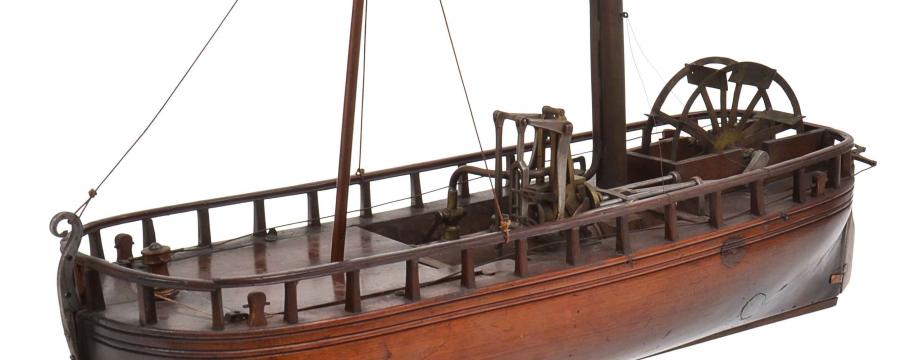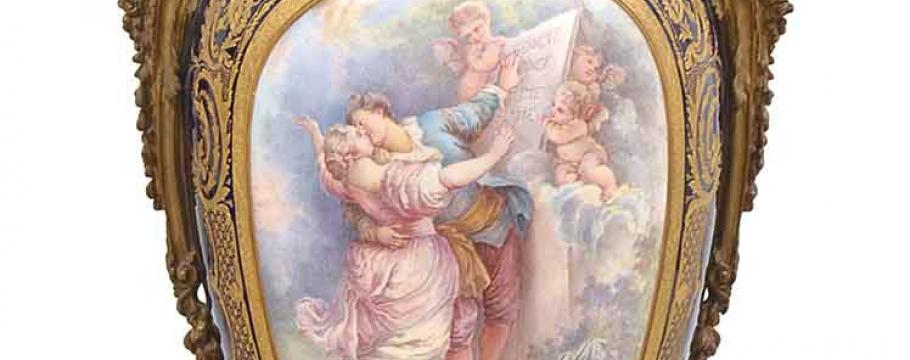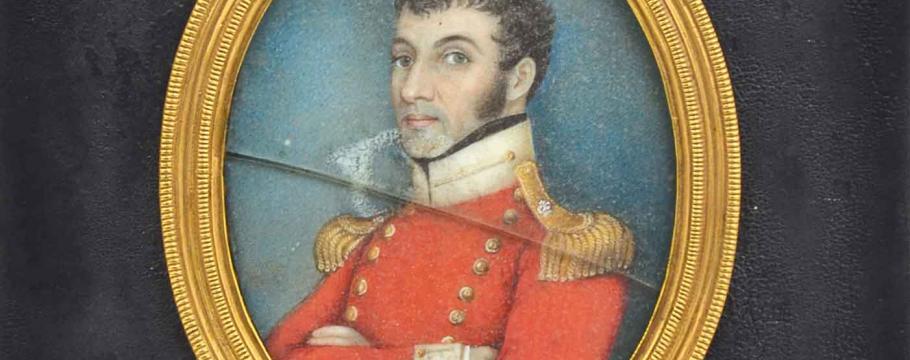






Practical steamboat set the new world in motion
Author: Richard Brewster | Posted: 24th May, 2014
A live steam model of the “Charlotte Dundas” – the world’s first practical steamboat – is among items to be auctioned from noon on Sunday June 1 at Leonard Joel, 333 Malvern Road, South Yarra.
The auction, entitled Classic Furniture, Objects and Collectables, comprises several single owner collections from different parts of Australia.
Built in the 1870s, the model (according to family history) is made from timber taken from the actual Charlotte Dundas after it was scrapped in 1861.
The Charlotte Dundas, named after Lord Dundas’s daughter, was designed by William Symington (1764-1831) – a Scottish engineer and inventor.
At 23, Symington developed and patented an improved atmospheric engine based on the designs of James Watt (credited with developing the first steam engine) and Thomas Newcomen.
Large versions of Symington’s engines were used with great success in mining and for several years he conducted trials using his engines in land carriages and small boats.
In 1800, Lord Dundas (who was governor of the Forth & Clyde Canal Company) approached William Symington to build a steam-powered paddleboat.
Lord Dundas had considerable commercial interest in the paddleboats that ran up and down the canals and believed steam power would greatly increase their efficiency.
Symington designed and patented a horizontal engine that was trialled in a paddle steamer in 1801 on the River Carron.
Lord Dundas was not satisfied with the boat’s performance, so a new version, the Charlotte Dundas, was built and made its maiden voyage on January 4, 1803.
More significantly, on March 28 in front of a large crowd it successfully towed two laden vessels along the canal for 18 miles (29 kilometres).
Unfortunately, the Canal Company decided the boat would cause too much damage to the canal banks and Lord Dundas withdrew his interest.
Sadly for Symington, further plans to develop his invention also collapsed and he died in relative poverty.
According to family history, Symington’s grandson and great-grandson John Rankine and W.H. Rankine built the auction model – although it is possible that the boat was built in 1873 under the supervision of James Hamilton, partner in Clyde shipbuilders Barclay, Curle & Co.
The auction contains many other interesting items including an impressive pair of floor standing Imari lidded urns, a Victorian Elliott oak cased three train regulator grandfather clock (the dial signed Elliott clockmaker/Clerkenwell, London circa 1890) and a monumental 19th century Sevres-style gilt metal mounted porcelain floor vase and cover, signed A. Cottinet.





